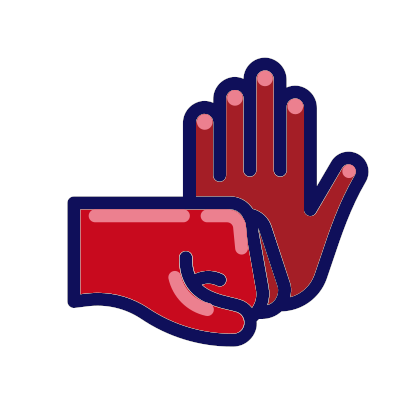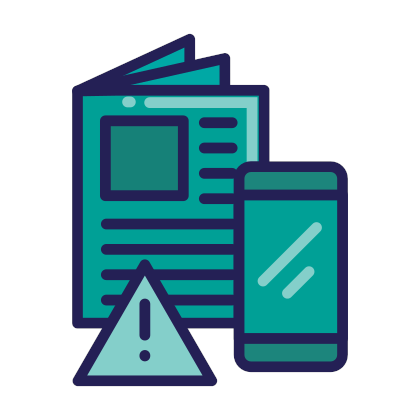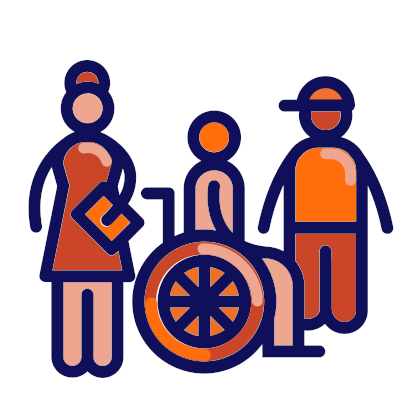Making children’s and students’ voices heard

Schools have a key role in upholding this principle. At the same time, students need to be aware of both their rights and responsibilities.
Learning about human rights and democracy is a fundamental first step for becoming an informed and responsible citizen.
Students also need to participate in activities such as debating and community work. Skills, knowledge and critical understanding must be coupled with the attitudes and values that form part of a democratic culture. All this should be promoted through a whole-school approach.
Facts & figures
While students make up approximately 92% of any given school’s population, the decisions in school are routinely made by the remaining 8% who are adults.[1]
Students learn better when they are engaged partners throughout the educational process.[2]
What is student voice?
Student voice is the right of students to have a say in matters that affect them in their schools, and to have their views and opinions taken seriously. It encompasses all aspects of school life and decision-making where young learners are able to make a meaningful contribution, adapted to their age and stage of development. It stretches from informal situations in which students express an opinion to their peers or staff members to participation in democratic structures or mechanisms, such as student parliaments and consultations.
Student voice can vary from simple self-expression to taking on a leadership role in an aspect of school life. It can be characterised according to a 6-fold typology of increasing complexity and responsibility:
- Expression – voice an opinion
- Consultation – asked for an opinion
- Participation – attend and preferably play an active role in a meeting
- Partnership – have a formal role in decision-making
- Activism – identify a problem, propose a solution, and advocate its adoption
- Leadership – plan and make decisions
Given that the relevant activities are age-appropriate, student voice can be expressed anywhere in the school community, in and out of lessons, e.g., through inviting students to comment on teaching approaches and techniques, suggest topics for class discussion, participate in school policy committees and/or consultations, or just join in a casual conversation on school matters with a teacher or other staff member in their free time.
Why is student voice important at school?
Student voice is rooted in the concept of children’s rights and human rights. In particular, Article 12 of the United Nations Convention on the Rights of the Child (UNCRC) establishes the right of every child to have a say in matters which affect them, whether in or out of school, as well as to be involved in decisions that affect them. More generally, the UNCRC includes other articles that seek to increase students’ voice, including the right to seek and receive information, to express their own views and to associate with others.
UN Convention on the Rights of the Child: Article 12
“Parties shall assure to the child who is capable of forming his or her own views the right to express those views freely in all matters affecting the child, the views of the child being given due weight in accordance with the age and maturity of the child.”[3]
Student voice can have many benefits both for schools and the wider society – for example:
- Participation in school decision-making fosters a sense of citizenship in young learners, helping them to develop important competences, e.g. co-operation and communication skills, self-efficacy, responsibility, civic-mindedness and respect for the value of democracy – all of which lie at the heart of the Council of Europe Reference Framework of Competences for Democratic Culture (RFCDC).
- Contributing to their school community gives young learners a sense of belonging, develops self-esteem and can lead to more respectful relationships. This has a positive influence on school discipline and helps to reduce the incidence of problems such as drop-out, bullying, substance abuse and radicalisation.
- Engaging students in active learning activities in class has a positive effect not only on the classroom atmosphere, but also on the educational achievements of students and their peers.
What are the challenges?
There are a number of major areas of challenge facing the development of student voice in schools.
The first relates to the attitudes of other school stakeholders. Parents, teachers school leaders and others who have traditional views of schooling sometimes feel that children and young people should be ‘seen and not heard’ in school. They think respect for others and for authority are best developed in a culture of deference. To counteract attitudes of this kind school leaders need to introduce elements of student voice gradually, explaining the process clearly to school stakeholders and sharing the successes with them when they take place.
Some stakeholders may see empowering young learners through student voice as undermining their own power or position of authority in the school. Teachers may sometimes feel that students have more rights than they have. This merely underlines the importance of developing a whole-school culture in which all stakeholders feel safe to express their opinions freely and openly, and to have their opinions taken seriously. Student voice goes hand in hand, therefore, with the creation of a general culture of democracy and human rights in school.
The second major area of challenge is ensuring that student participation is genuine participation and not tokenism or ‘window-dressing’. This means giving students opportunities to make a real difference to their lives and the lives of other school stakeholders, and helping staff to be more open to sharing their decision-making with young learners.
The Ladder of Children’s Participation
Roger Hart, in the book Children's Participation: The Theory And Practice Of Involving Young Citizens In Community Development And Environmental Care, developed the concept of a ‘ladder of participation’ which can be applied to student voice. He suggested eight different levels or degrees of student voice, from the simplest - which is little more than the manipulation of students for the school’s benefit - to activities where decision-making is genuinely shared between adults and young learners.
A third area of challenge is the difficulty of making opportunities for student voice equally open to all students. The problem arises to some extent on account of the perception that student voice applies only to formal school structures, like pupil parliaments. For stakeholders with more traditional attitudes towards teaching and learning it can be difficult to see student voice as integral to, rather than separate from the learning process in classrooms. Another aspect of this problem is that it is the more confident and out-going students who are prepared to voice their opinions openly or stand in class or school council elections. How to integrate student voice into learning and to involve a wider range of students in the process is a whole-school responsibility and needs to be taken seriously as an area of whole-school planning and as an important topic for teacher professional development.
How can schools get active?
There are a number of ways in which schools can develop more opportunities for student voice. These include:
- Encouraging teaching staff to consider how they can involve students in the learning process in the classroom, e.g., by creating more opportunities for students to express their own opinions, debate issues, make suggestions or draw up classroom rules;
- Creating mechanisms for student consultation on issues affecting school life, e.g., through questionnaires, suggestion boxes, surveys or focus groups;
- Establishing formal bodies or procedures, e.g., pupil parliaments, student committees and commissions, or ‘circle time’;
- Inviting students to sit on school policy-development committees, e.g., on gender equality, pupil safety or health and well-being;
- Teaching young learners the skills of public speaking and debate, e.g., discussion skills, active listening or argumentation;
- Providing opportunities for peer-led activities, e.g., peer education, peer assessment or peer counselling.
[1] https://soundout.org/why-student-voice-a-research-summary/
[2] https://soundout.org/why-student-voice-a-research-summary/ ; Beaudoin, N. (2005). Elevating student voice: How to enhance participation, citizenship, and leadership. Larchmont, NY: Eye on Education
[3] UN General Assembly, Convention on the Rights of the Child, 20 November 1989, United Nations
 Resources on Making children’s and students’ voices heard
Resources on Making children’s and students’ voices heard
Multimedia
Official texts
Policy documents
Studies
Higher education for democratic innovation (Council of Europe Higher Education Series No. 21) (2016)
Tools
 Related schools projects
Related schools projects
Address: Blisterhaugveien 9 – 7079 Saupstad
Country: Norway
Project: ‘Democracy in practice’ an elective subject in school
 Working language during the project:
Working language during the project:
- Norwegian and English
 Themes of the Council of Europe campaign “FREE to SPEAK, SAFE to LEARN - Democratic Schools for All” covered:
Themes of the Council of Europe campaign “FREE to SPEAK, SAFE to LEARN - Democratic Schools for All” covered:
- Making children’s and students’ voices heard
- Addressing controversial issues
- Preventing violence and bullying
- Dealing with propaganda, misinformation and fake news
- Tackling discrimination
- Improving well-being at school
 Competences from the Reference Framework of Competences for Democratic Culture (CDC) addressed and where / how they were integrated:
Competences from the Reference Framework of Competences for Democratic Culture (CDC) addressed and where / how they were integrated:
 Target group age range:
Target group age range:
- 11 - 15 and 15 - 19
 Level of education:
Level of education:
- Lower secondary education
Short description of the project:
I teach an optional subject called Democracy in practice, so this is not a project. But the students select each year options from a variety of subjects. In Norway, there is of course a general overall teaching framework on everything that we do as teachers in school. And there are laws to follow on everything we carry out as a school towards our students. These laws describe the students’ rights in education. The Norwegian educational directorate has provided a manual that forms the basis of the subject, but the approach is also local. Each city or local community can develop their own version of the subject, as long as it contains the above-mentioned benchmarks that connect the overall teaching goals.
In 2013, I was asked to begin teaching this subject because the socio-economic conditions of the local community that I work in has since the 70’s been poor. At the national level, this often results in different actions and programmes for enhancing and improving these conditions. This also happens in other parts in Norway, as well as other countries near Norway.
Our aim was to implement a set of ways for thinking and acting, and to reflect on what to teach young people from different backgrounds on the topics which are the focus of this conference. It is fundamentally about how we learn as human beings to behave nicely to each other, how to live good lives, and how we can make this possible. How should we teach the different topics on the competences of this conference? We have chosen to do this in a practical way. We believe the following: if young people want to have their voices heard, to be raised by adults to have good values, they have to have the right set of skills. We use practical tasks, related to their own age group, and topics related to their daily experiences. We also involve them in the decision-making that concerns them. If we are building schools or playgrounds, or different leisure activities, parks, roads, art inside or outside, in their communities, they are heard. We as adults take their opinions on board in our decisions. This is often done through youth-councils. But we also do this in the classroom. We also travel across Norway to learn about democracy, controversial issues and peace work. We teach topics in different institutions and to different people. For example, the Norwegian government has its own cursus on topics like this. We organise meetings with members of parliament, we visit and work on school projects and the teachings of the Nobel peace-centre in Norway, we visit Utøya and teach controversial issues at the European Wergeland Center. We visited the 22.July Centre and work on violent radical-extremism. We discuss subjects such as ‘what do children and young people need to grow up and have good lives?’. We work with city planners, various artists and politicians before they take their decisions. We also work, on the softer side, on how to live good lives. We do this by addressing the above-mentioned descriptions on competences.
 Aims/objectives
Aims/objectives
To give young people a practical coping-toolbox on how to deal with the different obstacles they face both as young people and often as adults too. To teach them how to reflect upon different issues and within their own decision-making on topics and obstacles they will encounter.
 Expected results/outcomes
Expected results/outcomes
- To enhance their ability to reflect on life issues that are important to young people.
- To give them the tools that help both in critical situations and in coping with daily life-situations.
 Changes
Changes
We want to see our young people become robust and cope with their lives and aim to provide them that tools that will make this possible. The changes we hope for are in a way general, we want to contribute to our society through good teachings, and hope it rubs off on more people than those who sit in our classroom.
An average day on how we have to think as teachers on changes can be like this: you always have to adapt to various things throughout the school year, such as being on the alert with regard to what is happening in the world. The topics we are teaching cannot be taught without taking this into account. We live in a global world, and now that world is closer to all of us, mainly because of the internet. Everyone has the ability to get an update on almost anything just by ‘clicking’ on the world wide web. We as teachers and adult human beings need to be updated at all times with regard to how this world works if we are going be able to teach our children the good stuff!
 Challenges you faced
Challenges you faced
If I do not get any students, I have no one to teach!
 Time-frame of the project:
Time-frame of the project:
There are no estimated timeframe other than if the schools headmaster and his team decide to stop this elective subject.
 Council of Europe materials on citizenship and human rights education used while preparing or implementing your practice:
Council of Europe materials on citizenship and human rights education used while preparing or implementing your practice:
None but the things that we use are similar.







